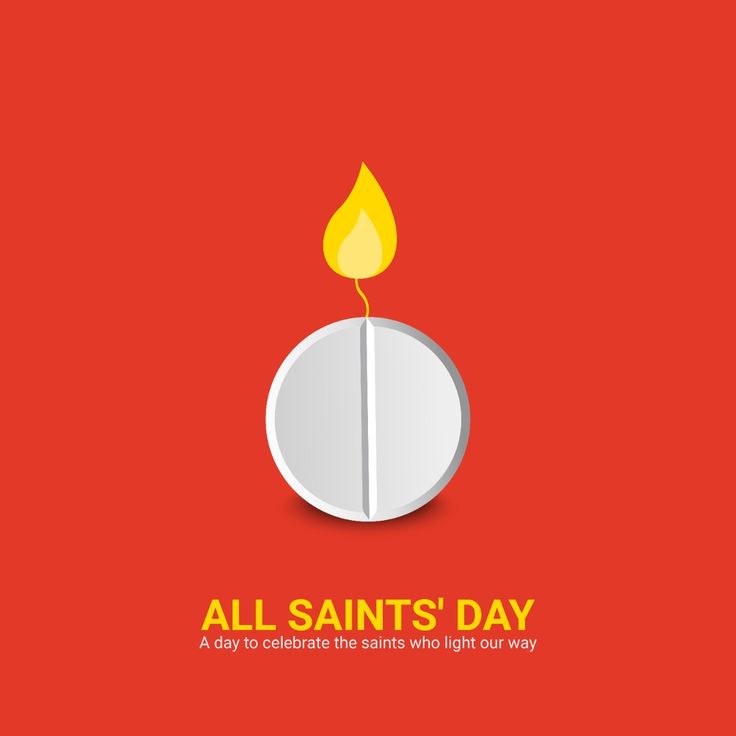🙏 Introduction: Why All Saints’ Day Matters More Than Ever
All Saints’ Day, celebrated every year on November 1, is a sacred day in the Christian liturgical calendar. It honors all saints—known and unknown—who have attained heavenly glory. It’s a day not just of remembrance, but also of hope, unity, and spiritual reflection.
- 🙏 Introduction: Why All Saints’ Day Matters More Than Ever
- 🕊️ All Saints’ Day: History and Origin
- 📊 Timeline: Key Events of All Saints’ Day
- 📌 10 Lesser-Known But Inspiring Facts About All Saints’ Day
- 🎯 Significance: Why All Saints’ Day Is So Powerful
- 🙌 Global Observance: How All Saints’ Day Is Celebrated Around the World
- 💬 Heartwarming Wishes and Messages for All Saints’ Day
- ❓ Frequently Asked Questions (FAQs)
- ❓ What is All Saints’ Day?
- ❓ Is it the same as All Souls’ Day?
- ❓ Do non-Catholics celebrate it?
- ❓ Is it a public holiday?
- ❓ What should one do on All Saints’ Day?
- 💡 Important Highlights at a Glance
- 🌱 Daily Life Impact of All Saints’ Day
- 🏁 Conclusion: The Call to Sainthood is for All of Us
Whether you’re deeply religious or simply respectful of cultural observances, All Saints’ Day calls us to pause and reconnect with values of kindness, humility, and divine grace.
🕊️ All Saints’ Day: History and Origin
📜 Early Origins:
The roots of All Saints’ Day can be traced back to 4th century Christianity.
Early Christians honored martyrs—those who died for their faith.
By the 8th century, Pope Gregory III dedicated November 1 as the official day for honoring all saints.
📅 Why November 1?
November 1 aligns with Samhain, a Celtic pagan festival. The Church chose this date to provide a Christian alternative that celebrated eternal life rather than death.
It follows All Hallows’ Eve (October 31), which evolved into Halloween.
📊 Timeline: Key Events of All Saints’ Day
| Year | Event |
|---|---|
| AD 609 | Pope Boniface IV consecrates the Pantheon in Rome to the Virgin Mary and all martyrs |
| AD 735 | Pope Gregory III officially designates November 1 as All Saints’ Day |
| Medieval Period | All Saints’ Day becomes one of the most important feast days in Europe |
| 16th Century | Protestants continue celebrating it as a day for all believers |
| Modern Era | Celebrated globally across denominations with cultural and local adaptations |
📌 10 Lesser-Known But Inspiring Facts About All Saints’ Day
The term “saint” means “holy” and refers to anyone who is in heaven.
The day was originally intended to honor Christian martyrs, but was later expanded to include all saints.
All Souls’ Day (November 2) follows it and honors departed souls who may still be in Purgatory.
In Mexico, it aligns with Día de los Inocentes, honoring deceased children.
Roman Catholics, Anglicans, Methodists, and Eastern Orthodox Christians all observe the day in different ways.
In the Philippines, it is a national holiday known as Undás, where families gather in cemeteries.
Some churches hold “Hallows’ Vigil” services on October 31.
In France, it is called La Toussaint—schools and businesses often close.
Pope John Paul II once said All Saints’ Day reminds us of our universal call to holiness.
All Saints’ Day celebrates not just canonized saints, but everyday people who lived virtuous lives.
🎯 Significance: Why All Saints’ Day Is So Powerful
🌟 Spiritual inspiration: The day reminds us that sainthood is not reserved for a few but is attainable by all through goodness, service, and faith.
🧘♀️ Reflection & gratitude: It gives us space to honor those who walked before us and served as role models in our spiritual journeys.
🕯️ Hope in suffering: It encourages the belief that suffering has purpose and can lead to eternal peace.
🤝 Community unity: Churches worldwide unite to celebrate the “communion of saints.”
💒 Liturgical importance: It’s a Holy Day of Obligation in the Roman Catholic Church.
🙌 Global Observance: How All Saints’ Day Is Celebrated Around the World
🇮🇹 Italy:
Families visit cemeteries with flowers and candles.
Special masses are held in churches and cemeteries.
🇵🇭 Philippines:
Families camp overnight in cemeteries.
People light candles, share meals, and pray together.
🇫🇷 France:
Public holiday known as La Toussaint.
Chrysanthemums, symbolic of remembrance, are placed on graves.
🇲🇽 Mexico:
Linked with Día de los Muertos (Day of the Dead).
Altars (ofrendas) are built to honor deceased loved ones.
🇪🇺 Other European Countries:
In Germany and Austria, it is called Allerheiligen.
Churches ring bells to commemorate the departed.
💬 Heartwarming Wishes and Messages for All Saints’ Day
“May all the saints, known and unknown, pray for you and protect your soul.”
“On this sacred day, may we be reminded that we too are called to be saints.”
“All Saints’ Day is a reminder that heaven is not far—it’s a goal within reach.”
“May the light of the saints shine upon your path and lead you to grace.”
“Wishing you a peaceful All Saints’ Day filled with prayer, reflection, and hope.”
❓ Frequently Asked Questions (FAQs)
❓ What is All Saints’ Day?
A Christian holy day celebrated on November 1 that honors all saints, known and unknown.
❓ Is it the same as All Souls’ Day?
No. All Saints’ Day honors those already in heaven; All Souls’ Day (November 2) honors all the faithful departed who may be in purgatory.
❓ Do non-Catholics celebrate it?
Yes. Anglicans, Lutherans, and Methodists celebrate it, though customs vary.
❓ Is it a public holiday?
In countries like the Philippines, France, Italy, Spain, and Austria, it is a public or religious holiday.
❓ What should one do on All Saints’ Day?
Attend mass or church service
Visit graves of saints or loved ones
Light candles, pray, and reflect
Read about the lives of the saints
💡 Important Highlights at a Glance
📅 Date: November 1
🕊️ Meaning: Honors all saints, known and unknown
📜 Origin: 4th–8th century Christian practice
🌍 Celebrated in: Europe, Asia, the Americas, Africa
🏛️ Liturgical Status: Holy Day of Obligation in the Catholic Church
🌺 Symbols: White lilies, candles, halos, prayer hands
🌱 Daily Life Impact of All Saints’ Day
👪 Personal Level:
Promotes virtue, forgiveness, humility, and gratitude
Inspires people to model lives after saintly examples
Encourages reflection on mortality and eternity
🌍 Society:
Unites communities across borders and beliefs
Breaks down fear of death with celebration of life
Promotes intergenerational respect and connection
🏡 Family:
Encourages families to talk about virtues, ancestors, and values
Builds legacy and memory traditions through visits to graves or shared prayer
🏁 Conclusion: The Call to Sainthood is for All of Us
All Saints’ Day is not a festival of the past—it is a call for the present and future. It reminds us that the journey of holiness, compassion, and love is not just for canonized saints, but for you and me.
Let us carry forward the legacy of the saints in our daily actions. Whether it’s by offering forgiveness, lending a helping hand, or simply living with integrity, every act of kindness echoes the saintly path.
🌟 “Saints are not superhuman. They are people who loved God and their neighbor in ordinary life.” — Pope Francis








